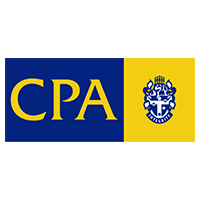 From 7.30 pm AEST on 12 May 2015 up to 30 June 2017, all small businesses (with an annual turnover less than $2M) will be permitted to claim an immediate tax deduction on any individual assets they start to use or install ready for use, that cost less than $20,000.
From 7.30 pm AEST on 12 May 2015 up to 30 June 2017, all small businesses (with an annual turnover less than $2M) will be permitted to claim an immediate tax deduction on any individual assets they start to use or install ready for use, that cost less than $20,000.
ASSET WRITE OFF AND ACCELERATED DEPRECIATION
This deduction applies on an individual asset basis and there is no limit as to the number of individual assets that the small business can apply to this concession. Qualifying assets used for running your business might include cars, utes, vans, motorbikes, trailers, lawnmowers, coffee machines, ovens, fridges, office equipment, photocopiers, carpets, tables and chairs, printers, tools, air-conditioning units, welding equipment, chainsaws, generators, pumps, solar panels, televisions, sound and security systems, computers, tablets and smartphones. The concession does not apply to stock you buy for your business.
Assets costing over $20,000 can be pooled and depreciated at the same rate, 15% in the first income year and 30% in each subsequent income year. If the value of the asset pool is less than $20,000, it can be immediately deducted until the end of June 2017. Most small capital purchases will be eligible for the new threshold, with the exception of assets that have specific depreciation rules, including in-house software and horticultural plants.
For this same two year period up to 30 June 2017, the Government has suspended the current lockout laws for the simplified depreciation rules (which had prevented small businesses from re-entering the simplified depreciation regime for 5 years if they are opt-out).
In addition, from 7.30 pm 12th May 2015, all primary producers will be entitled to an immediate deduction for capital expenditure on fencing and water facilities, such as dams, tanks, pumps, and water towers. Further, fodder storage assets will be depreciated over three years. This will be a permanent change and represents a substantial acceleration of the current write off rules.
CUT IN CORPORATE TAX RATE & TAX DISCOUNT FOR UNINCORPORATED ENTITIES
From 1 July 2015, the company tax rate for small incorporated businesses (with annual turnover less than $2M) has been cut by 1.5% percentage points, from 30% to 28.5%. However, the franking credit rate remains unchanged at 30% which will provide certainty for investors.
Of course, only about one-third of Australian small businesses are structured as companies so if you operate as a sole trader, partnership or trust and turn over less than $2m you are eligible for a 5% discount on your tax from 1 July 2015. This discount is viewed to be in line with the 1.5% reduction in the corporate tax rate. The 5% discount will be capped at $1,000 per individual in an income year and will be provided in the form of a tax credit in your income tax return. Individual taxpayers will still calculate their business and personal income the same way but they will get a 5% discount on the tax payable on their business income.
The government says a small business owner who trades as a company with an annual turnover of $1.3 million and taxable income of $200,000 currently pays $60,000 a year in income tax. With the company tax rate cut to 28.5%, the business will now pay $57,000 in tax and save $3,000.
A sole trader with an annual turnover of $300,000 and a taxable income of $75,000 would pay a tax of around $16,000 under the current system. With the 5% tax discount, the sole trader will pay $15,200 in tax, a saving of $800.
EMPLOYER SUBSIDIES HIRING WORKERS UNDER 30 AND OVER 50
SMEs that hire job seekers under the age of 30 or workers aged 50 plus will share in a redesigned national wage subsidy pool, worth approximately $1.2 billion over four years. The subsidy consolidates four existing programs, the Long Term Unemployed Wage Subsidy, the Youth Subsidy, the Restart Subsidy, and the Tasmanian Jobs Program.
From November 1, eligible employers will receive a subsidy of up to $6500 if they hire a job seeker under the age of 30, an Indigenous job seeker, a parent returning to the workforce or a long-term unemployed job seeker. Eligible employers that hire workers aged 50 or older will also receive up to $10,000 under the Restart arm of the program and the cash will be available progressively over 12 months instead of the current 24 months.

The government will also commit $331 million over four years for a new Youth Employment Strategy. This includes $212 million over the four years to provide an intensive Transition to Work program to support people aged between 15 and 21 years who are at high risk of long-term unemployment and welfare dependency. The start date is scheduled for January 1, 2016, and the program will involve community-based organizations helping young people develop work-related skills while also encouraging them to take up apprenticeships or traineeships. An additional $106 million will also be provided for support programs for vulnerable young people at most risk of long-term unemployment, including migrants, parents and those experiencing mental illness.
The budget also included $18.3 million over five years for a national work experience program, which will allow job seekers to complete up to 25 hours of unpaid work experience a week for up to four weeks while still receiving income payments.
NEW CAPITAL GAINS TAX RELIEF
From the 2016/17 income year, new Capital Gains Tax roll-over relief will be available for small businesses (with an annual turnover less than $2M) that change their legal structure that does not necessarily involve incorporated entities. This is to assist businesses who might find their initial business structure is unsuitable when their business becomes more established.
Presently, CGT roll-over relief is available to sole traders and trusts that move to a company structure. There is very little detail on the proposed measure at this stage, however, we are hopeful that the measure will extend relief to situations where a sole trader wishes to move to a trust or partnership structure, or where a company structure wishes to adopt a trust structure for its business.
FARMING & PRIMARY PRODUCTION
The budget includes a package of measures designed to help agricultural businesses, particularly those affected by the drought. The government will provide $250 million to continue the Drought Concessional Loan Scheme and the Drought Recovery Concessional Loan Scheme for one additional year, as well as $25 million from 2015/16 to help farmers guard against pest animals in drought-affected areas.
The budget also provides for $35 million for a civil and civic infrastructure grants program in drought-affected areas and $20 million to extend existing support services for farmers in 70 drought-affected areas. In addition, from 7.30 pm 12th May 2015, all primary producers will be entitled to an immediate deduction for capital expenditure on fencing and water facilities, such as dams, tanks, bores, irrigation channels, pumps, windmills, and water towers. Further, fodder storage assets will be depreciated over three years. This will be a permanent change and represents a substantial acceleration from the current system where the effective life for fences is up to 30 years, water facilities are three years and fodder storage assets are up to 50 years.
STREAMLINE BUSINESS REGISTRATIONS CUT RED TAPE
 The Federal Government's $5.5 billion Growing Jobs and Small Business's package includes a number of measures designed to make it easier and cheaper to establish a new business or change the structure of an existing one. The Government will fund a single online portal to help streamline the business and company registration process. The same website will give small
The Federal Government's $5.5 billion Growing Jobs and Small Business's package includes a number of measures designed to make it easier and cheaper to establish a new business or change the structure of an existing one. The Government will fund a single online portal to help streamline the business and company registration process. The same website will give small
businesses access to register for goods and services tax, pay-as-you-go withholding, fringe benefits tax, and business names. It will be a joint project by the ATO, ASIC and the Department of Industry and Science.
Early-stage businesses will be able to write-off professional costs immediately (including accounting and legal fees) when starting the business rather than claiming them over a five-year period.
CRACKDOWN ON GST FRAUD
The federal government will give the Australian Tax Office an additional $265 million over three years to continue its work to stamp out fraud related to the goods and services tax. In the budget papers, the government said the money will be spent to help the ATO identify fraudulent GST refunds, under-reporting of GST liabilities, failure to lodge GST returns and outstanding GST debts.

